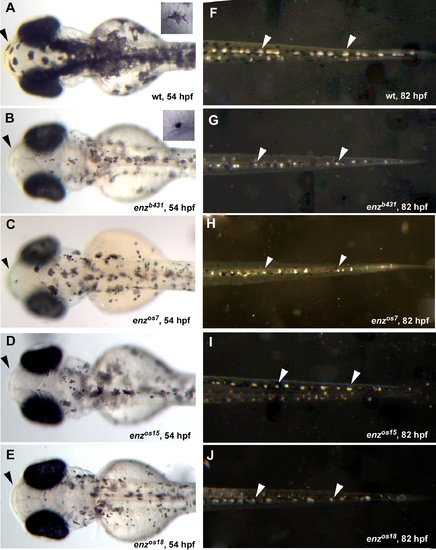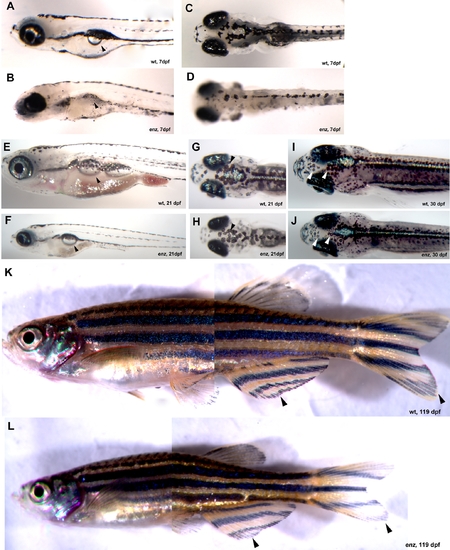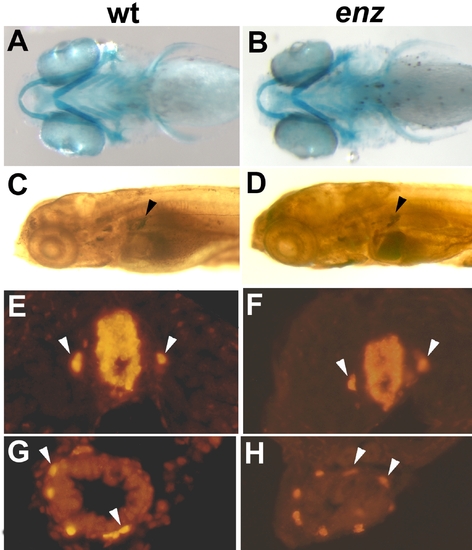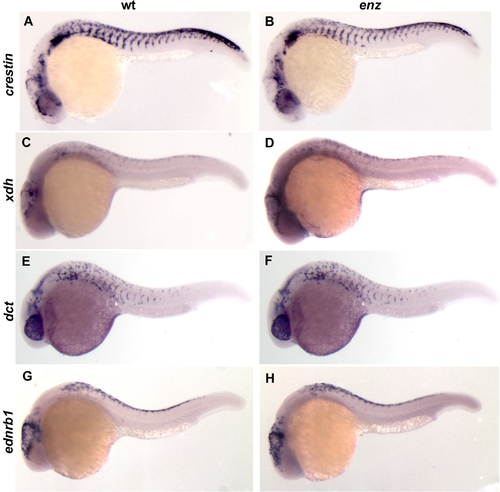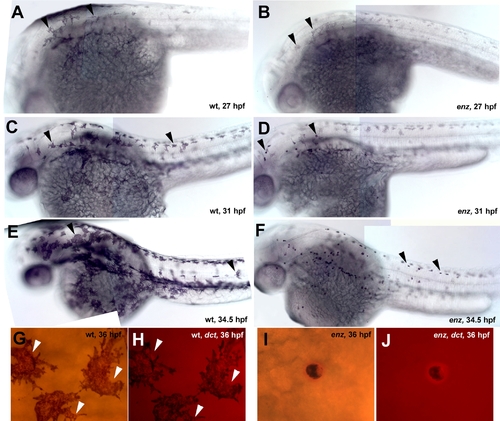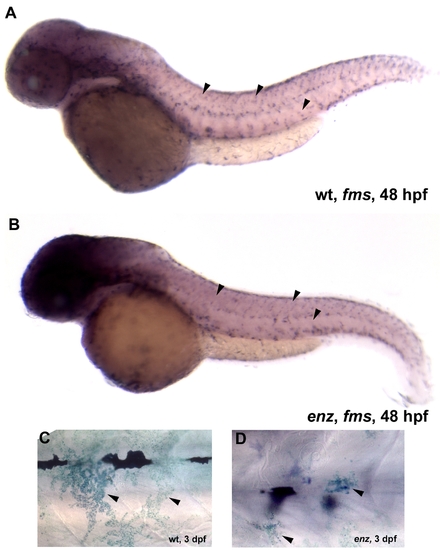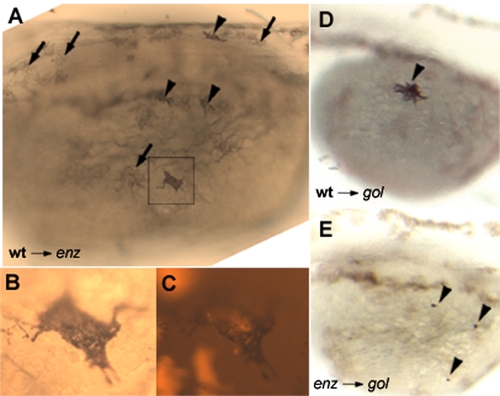- Title
-
Zebrafish endzone regulates neural crest-derived chromatophore differentiation and morphology
- Authors
- Arduini, B.L., Gallagher, G.R., and Henion, P.D.
- Source
- Full text @ PLoS One
|
All three neural crest-derived chromatophore cell types are affected by enz mutations. PHENOTYPE:
|
|
enz larvae and adults are undersized compared to wild-type siblings. |
|
enz selectively affects chromatophores among neural crest derivatives. |
|
The numbers and distribution of chromatophore precursors appear normal in enz homozygotes at 24 hpf. EXPRESSION / LABELING:
|
|
Melanophore cell morphology changes in enz mutant embryos. |
|
Xanthophores are qualitatively reduced in number and size in enz mutants. EXPRESSION / LABELING:
PHENOTYPE:
|
|
enz acts cell autonomously with respect to melanophore development. |

Unillustrated author statements |

